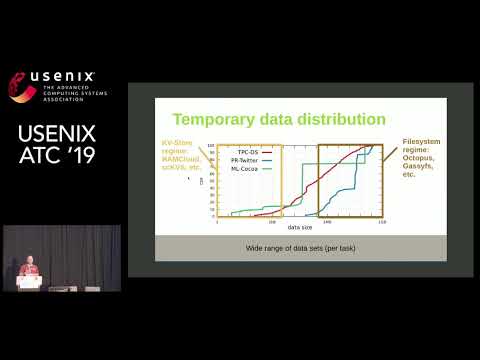Description:
Explore a conference talk from USENIX ATC '19 that delves into the NodeKernel architecture, a novel distributed storage solution designed to efficiently handle temporary data exchange between tasks in data processing frameworks. Learn about the fusion of file system and key-value semantics in a common storage kernel, and how it leverages modern networking and storage hardware for high performance and cost-efficiency. Discover how NodeKernel provides hierarchical naming, high scalability, and near bare-metal performance for a wide range of data sizes and access patterns characteristic of temporary data. Examine the benefits of Crail, the concrete implementation of NodeKernel, which utilizes RDMA networking with tiered DRAM/NVMe-Flash storage to improve NoSQL workload and Spark application performance significantly. Understand how Crail's storage approach across NVMe Flash and DRAM tiers reduces storage costs compared to DRAM-only systems.

Unification of Temporary Storage in the NodeKernel Architecture
Add to list
#Conference Talks
#USENIX Annual Technical Conference
#Computer Science
#Software Engineering
#Scalability
#Business
#Performance Improvement